We visited Death Valley National Park in late September 2015. It was hot. Very hot. We arrived in the early afternoon, and temperatures were such that we just hopped out of the car to see the Visitors Center and took the very short hike to Zabriskie Point to take in the colorful, hilly scenery. That was about it.
Death Valley has left a fantastic impression on us, even during that short visit. I am sure we'll be back, and with that in mind, I have prepared a list of places to see in the park. I hope you'll find it useful if you're planning a visit.
This list includes the following -
- Badwater Basin
- Zabriskie Point
- Artist's Drive
- Devil's Golf Course
- Dante's View
- Titus Canyon
- Mesquite Flat Sand Dunes
- Darwin Falls
- Ash Meadows National Wildlife Refuge
- Manzanar National Historic Site
A majority of attractions in Death Valley involve hiking, traveling, or photo-taking of some kind. We have highlighted the best attractions below, but be sure to look at all the spots Death Valley has to offer!
1. Badwater Basin
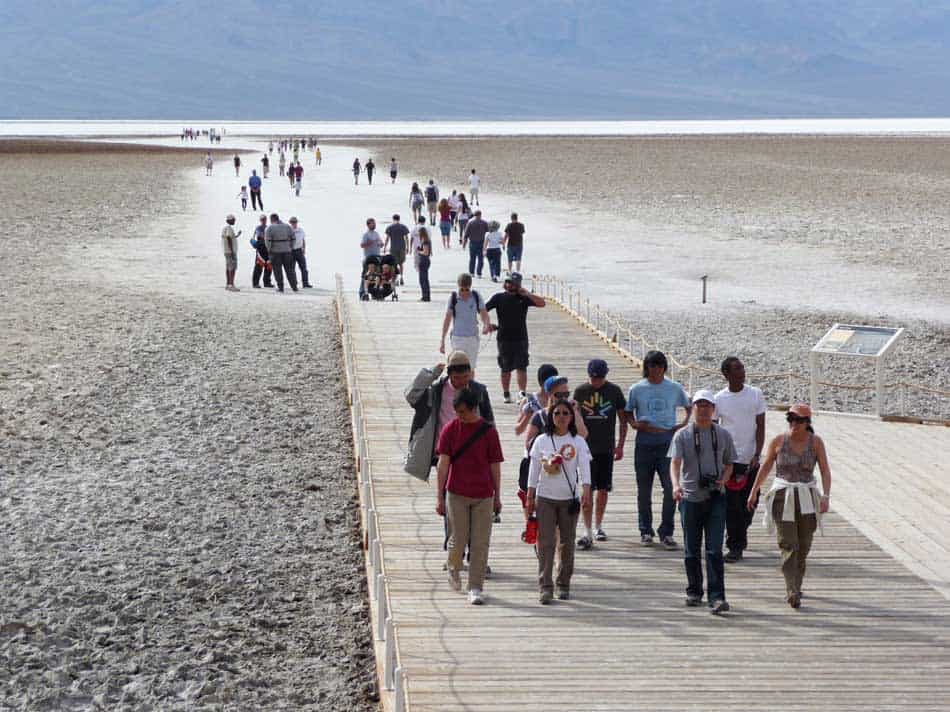
The Badwater Basin is the lowest point in the country and is located in the southern part of Death Valley. Rainfall will occasionally form a lake on the salt flats—it’s only temporary, though, as the dry climate evaporates the water faster than it falls (and the evaporation leaves behind a layer of salt on the basin, giving the illusion of being covered in snow).
Its name arose (according to a sign in the parking lot) because someone passed through with a thirsty mule. There was water in the basin to drink, but the mule refused because of the high salt content. And thus Badwater was born. The salt in the basin stretches about five miles, so many visitors don’t attempt to walk the whole length.
Badwater is a very popular location in Death Valley, and as such, the parking lot fills up rather quickly—something to keep in mind if you’re planning a trip on the weekend! Get there early, get a good spot, and enjoy a short walk into the empty lake.
2. Zabriskie Point
Zabriskie Point is the beginning of the Badlands Loop. It’s one of the most popular spots in the park, offering panoramic views of Death Valley from the canyons to the gulches. The slopes around Zabriskie Point have been baked with sun and often lack water (as they lie on the upper east side of Badlands). As I mentioned, even on a hot day, we managed the short hike to the viewpoint - well worth it!
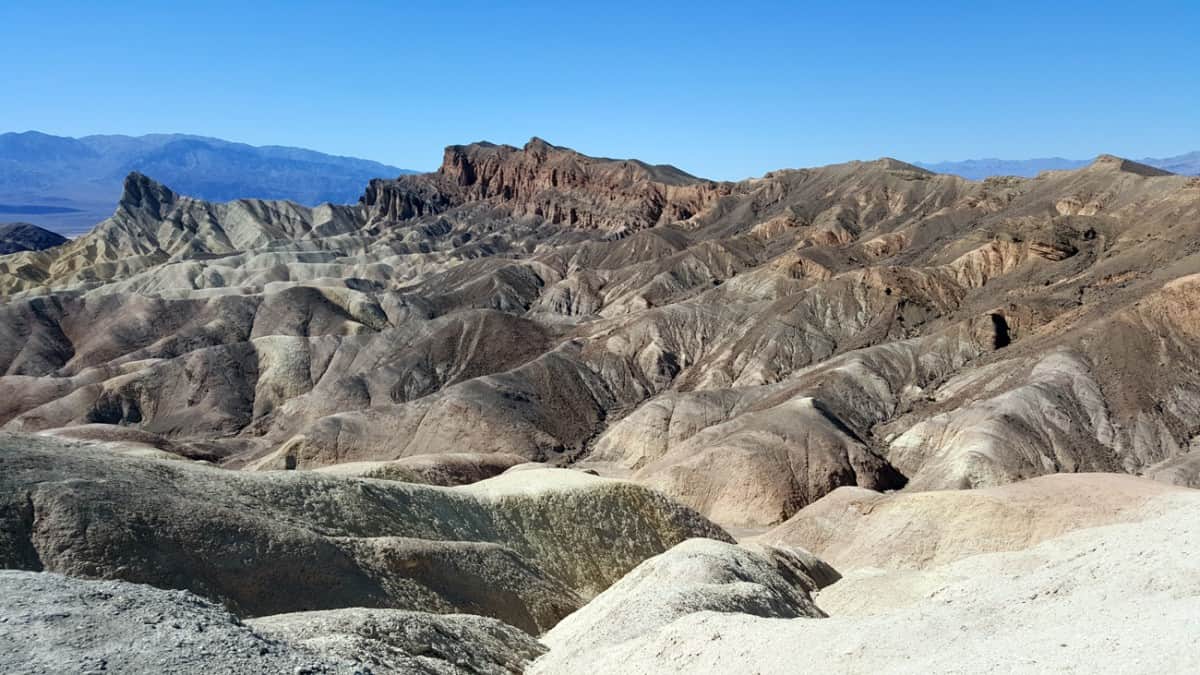
There’s a different view in every direction. To the south, you’ll see multicolored mountains behind the Artist’s Palette, and to the northeast is a glimpse of the Red Cathedral Cliffs.
It’s just a short walk up a hill to this magnificent spot, often regarded as a must-see on your first visit to the valley. The early morning is the best time to visit the point, so plan accordingly!
3. Artist's Drive
This south-to-north route through the valley takes you past one of the most unique landmarks in Death Valley: the Artist’s Palette. It follows a mountainside of soil that rich metals have colored. Artist’s Drive rises above Badwater Road at nine miles long, allowing you to see the salt flats from a higher perspective.
Here's a great time-lapse video of driving this road -
Since the Artist’s Palette is the main attraction for the drive, you’ll want to try to time your journey down the drive for the late afternoon. The palette’s blues, purples, greens, yellows, and reds are the most vivid this time of day.
Just turn off Artist’s Drive into the parking lot and make your way to the vibrant mountainside.
4. Devil's Golf Course
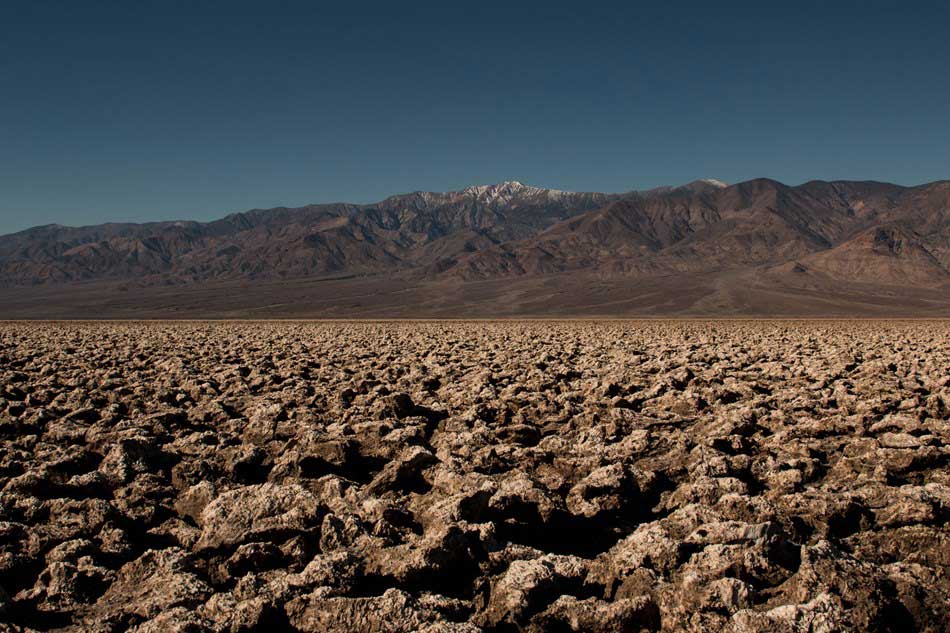
The Devil’s Golf Course is a large area where the wind and rain have eroded rock salt into jagged spears (naturally, pets aren’t allowed here, and you should be sure to dress accordingly). Its name comes from the idea that “only the Devil could play golf on such links.”
On a hot day, if you press your ear to the ground, you may hear the sounds of salt expanding and contracting.
Be careful with your footing since the salt slabs are sharp and difficult to walk on. It’s a shortstop between Furnace Creek and the Badwater Basin, easily factored into a day trip of the park’s most popular spots. If you want to experience every aspect of Death Valley, put this one on your list—the terrain differs from any others you’ll see.
5. Dante's View
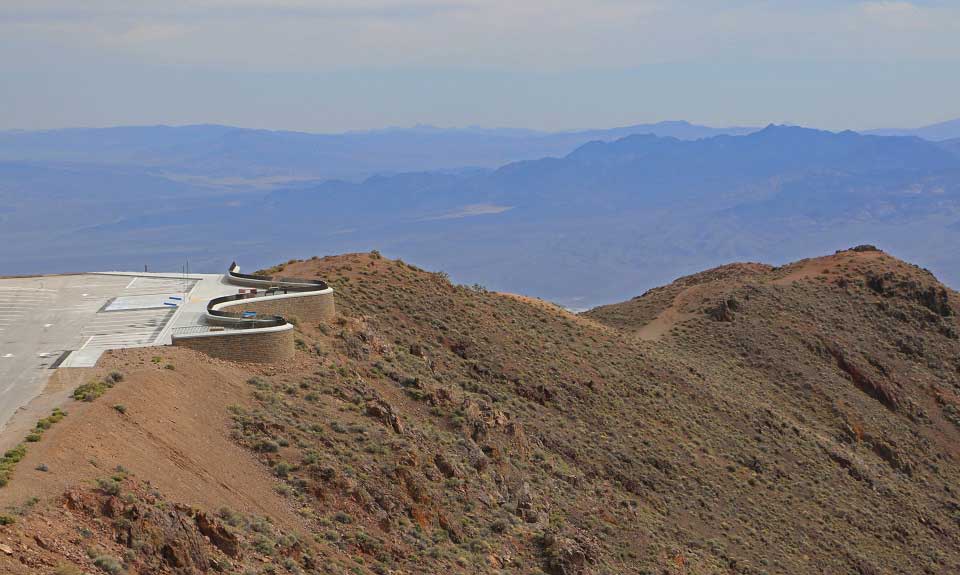
The scenery visible from Dante’s View is some of the most photogenic in the Valley. It was used in scenes for Star Wars IV: A New Hope when that type of filming was permitted in the wilderness.
Travel up Dante’s View Road (which is quite steep, so make sure your vehicle can handle it) and pull into the parking lot. From there, you can take several paths to explore the views, one of which leads right to the edge.
The road offers stunning views of the area as it twists and turns up the peak. You can see the Badwater Basin below and Mt. Whitney across the way. Since it’s at a higher elevation and in a dry climate, the best time to visit the view is in the cooler mornings before the sun heats the land too much.
6. Titus Canyon
Titus Canyon is the most popular back road in Death Valley. It’s filled with mountains, rock formations, wildlife, rare plants, and even a ghost town. You’ll need a vehicle with two-wheel drive for this trip (potentially four-wheel drive if the area has suffered adverse weather). The total trip takes about two to three hours, though many visitors stop in at the ghost town before heading out on the one-way trip.
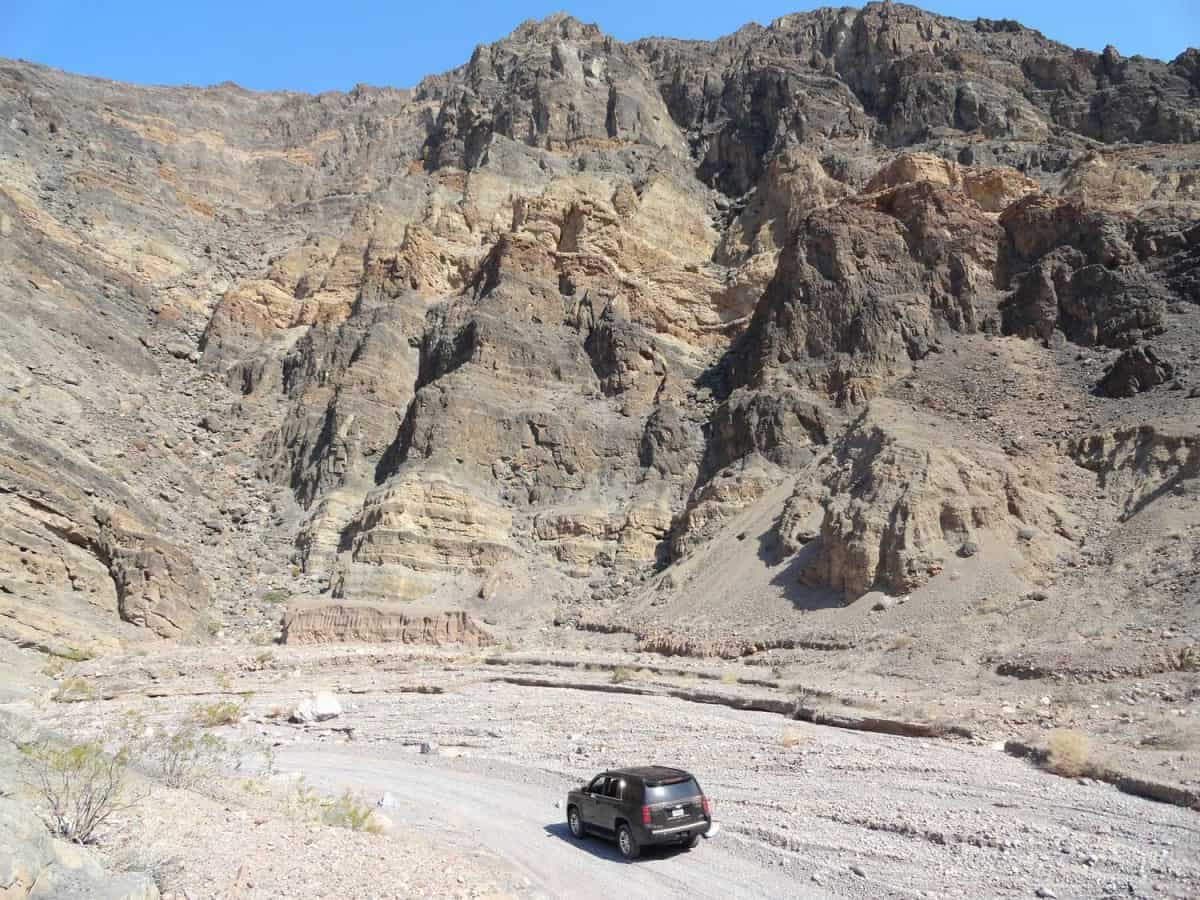
The Red Pass is the highest point on the road that divides the Titanothere and Titus canyons, where you’ll have the opportunity to experience views in both directions. The limestone cliffs of the Titus Canyon have steep slopes that provide habitats for bighorn sheep.
The last 1.5 miles of the 27-mile trip is where the canyon narrows, descending to the roughest part of the trip. It’s recommended that you scout out the area before driving in and then enjoy a spot of shadows and echoes on foot.
7. Mesquite Flat Sand Dunes
Less than one percent of the desert in Death Valley is covered in sand dunes like the Mesquite Flat dunes. The Mesquite dunes are the easiest and most well-known dunes in the park, rising (at most) 100 feet. They’re located in central Death Valley and can be reached via an unpaved path called Sand Dunes Road.
Mesquite trees in the area have created spaces perfect for wildlife habitats, as well as three types of dunes: crescent, linear, and star-shaped. However, there’s no standard pathway since the sand shifts so much.
You can walk however far, so start wherever you want at the parking lot and adventure as you wish. Other dunes in the valley include the Eureka Dunes, Saline Valley Dunes, Panamint Dunes, and Ibex Dunes.
8. Darwin Falls
Located in the Panamint Spring area, Darwin Falls is regarded as a “miracle in the desert.” It’s about two and a half miles up an unpaved road from Panamint Springs and has a one-mile trail to the falls.
Although it isn’t a standard trail, it’s still mostly level and features several stream crossings. Since Darwin Falls is spring-fed, it flows year-round and can be visited anytime.
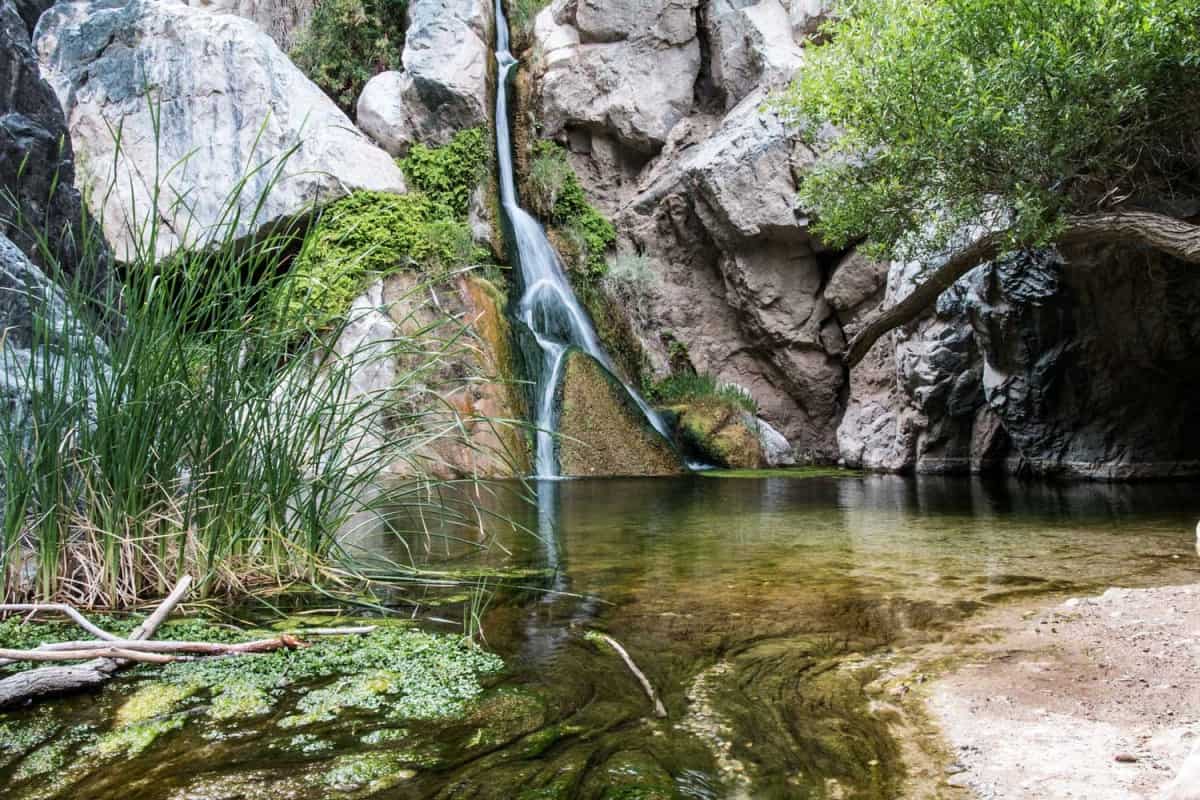
Previous visitors have mentioned it’s a “very nice hike” and “worth the small trip.” Darwin Falls has surprised many visitors with its existence, given that it’s in the valley of a desert.
It has even been called “a hidden oasis.” There are a few rocks you’ll have to navigate, though, so be sure to dress and prepare accordingly if you decide to go!
9. Ash Meadows National Wildlife Refuge
Ash Meadows Visitor Center is open daily from 9:00 a.m. to 4:00 p.m. from March 10 to November 3. This new facility at Ash Meadows allows you to discover the wildlife in the Mojave Desert’s biggest oasis. It’s the only location where the 26 species of plants and animals it houses exist.
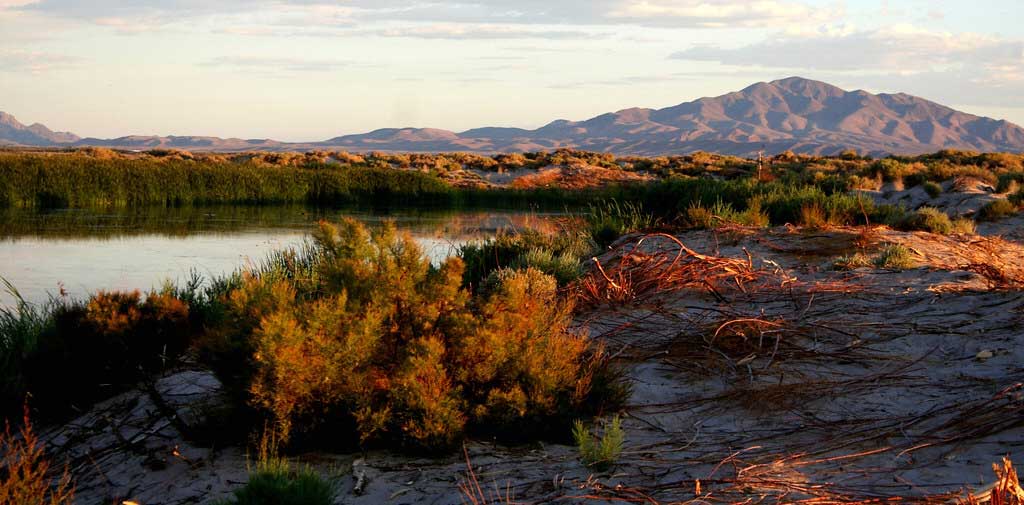
Ash Meadows has a lot of history and was once home to Native Americans. They hunted in the mountains and used water from the spring pools for their crops. Pioneers began to settle the area in 1896, and it wasn’t until 1984 (after having become a commercial area in the 1960s) that the area was declared a refuge.
The Visitor Center has an Ash Meadows movie available for your viewing, along with interactive exhibits for you to explore. There’s a bookstore for you to peruse that supports the refuge and is managed by the Death Valley National History Association.
10. Manzanar National Historic Site
The Manzanar National Historic Site is also located just outside of Death Valley. It was one of ten camps where Japanese-American citizens and Japanese immigrants were kept during World War II.
It has extensive historical exhibits, a film, reconstructed buildings, and the ability to tour some of the grounds.
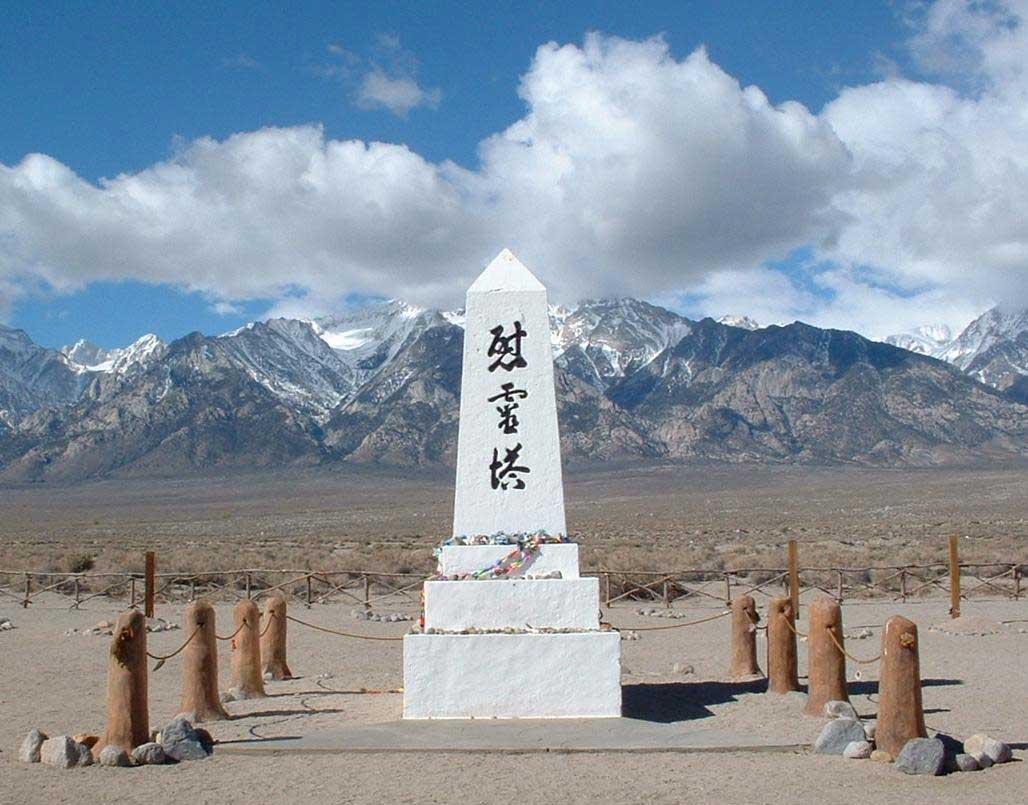
It’s an important part of history and offers you an opportunity for reflection and learning. If you’re a history buff or if you’re looking to spend a day of your vacation mostly inside after having hiked for miles, the Manzanar National Historic Site is a rich location to do so.
Talk to the Park Rangers
Death Valley can be a dangerous place all year round. All the more reason to do what we do at the beginning of any visit to any national park: Talk to the rangers. They will have the weather forecast and a better understanding of its implications. Talk to them before hitting the trails.
Also, the visitor's center is a great way to learn about a national park. And here, it's air-conditioned, which means you can spend time exploring without being exposed to the harsh elements.
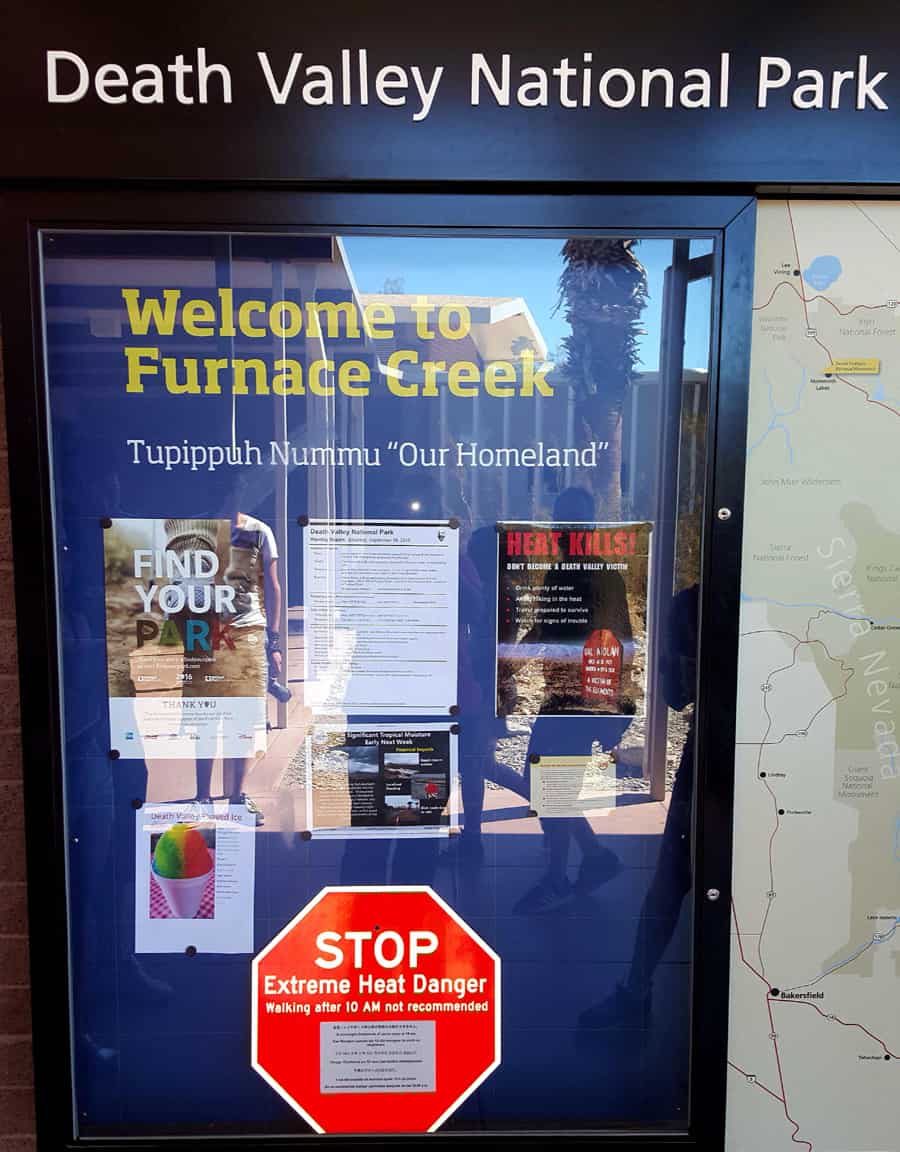
Death Valley Organized Tours from Las Vegas
If visiting Death Valley alone is a bit intimidating, don’t worry! We understand. There’s a lot to do and a lot to see, and sometimes you need just a little bit of help along the way.
Many people who visit Las Vegas do so without renting a car, so an organized tour may be your only way to explore Death Valley National Park. (If you have a car, check out my post about the best self-drive day trips from Las Vegas).
Pink Adventure Tours offers a tour of Death Valley that leaves from Las Vegas, Nevada. Their seasonal tour is available from September to May (in the cooler months), and children under three aren’t permitted.
You’ll be able to see everything Death Valley has to offer. Tickets start at $275 for adults and $248 for children. For more information, check out the website for Pink Adventure Tours.
This small-group tour is approximately ten hours long and takes you on a full-day journey through Death Valley. You’ll see views like Zabriskie Point and Artist’s Palette and even have the opportunity to travel to the highest point of Death Valley: Dante’s Peak. The tour starts at a hotel pick-up and provides a boxed lunch and water. Tickets start at $229.00.
Another all-inclusive day trip stops at the Badwater Basin, Rhyolite Ghost Town, and Ubehebe Crater. Pick-up and drop-off from most hotels in Las Vegas are offered, and breakfast and a boxed lunch are provided. This trip lasts around 11 hours, giving you plenty of time to experience Death Valley. Tickets start at $221.99. For more information, check out their website here.
There are other tour operators. Please know that we're not affiliated with any of them, including the one mentioned here, nor have we tried them. Do your research to make sure you're going on the best tour for your needs.
When's the best time to visit Death Valley National Park?
Early spring would be the best time to visit, especially following a rainy winter. Beauty blooms in Death Valley during the spring, and it’s quite a sight to see.
The types of flowers vary between elevations: Desert Gold and Gravel Ghost bloom in the lowest parts of the valley, while Purple Sage and Magnificent Lupine bloom on the mountain slopes between 5,000 and 11,000 feet elevation.
The abundance of wildflowers depends on various factors, including good warmth, solid rainfall, and little wind. As such, the beauty changes year to year—if you’re lucky, you’ll catch the valley at just the right time. There are always flowers blooming in the valley in springtime, though. They may just be few and far between.
To see this phenomenon, you have to time your visit just right. The different elevations bloom in different months. Lower flowers typically bloom between mid-February and mid-April; middle elevations typically bloom between early April and early May, and higher elevations typically bloom between early May and mid-July.
As you can see, there’s a bit of crossover between the elevation timing, so you may see even more flowers than expected, depending on when you go. (Note that picking flowers is prohibited since it’s a national park.)
What to Do in Death Valley in the Winter
Winter camping in Death Valley is incredibly popular because it’s the cooler season but still too warm for loads of snow. The Furnace Creek Campground is one of the many campgrounds in the valley. Their peak season is between October and April, making it the perfect spot for camping from December to February.
There are many other campgrounds in the valley, and it’s rare for them to be full. That said, you never know, especially on holiday weekends (though visitors usually have good luck finding spots at Sunset and Stovepipe Wells).
Campgrounds are first-come, first-serve, and you can arrive anytime since you pay at the camp.
Individual camps vary in seasons and may or may not require reservations. Check their statuses and see what’s available before heading out for your trip!
What to Do in Death Valley in the Fall
One of the best times to hike in Death Valley starts in the fall when the summer heat has died down. Check out the easier ones if you want to do multiple hikes daily. The Natural Bridge is about one mile long and takes 45 minutes to hike round-trip (sans pausing along the way). There’s even a parking lot big enough for buses and RV’s.
If you’re considering some more moderate or difficult hikes, prepare accordingly. Even though they’re in the desert, the peaks can sometimes get covered in snow—and you wouldn’t want to get caught at the top without the right equipment.
The same kind of precedent exists with water. Death Valley’s climate is so dry that, at minimum, for a short day hike, you’ll need to drink at least two liters of water in the cooler months.
What to Do in Death Valley if You Only Have One Day
If you’ve only got one day, consider visiting all the places in Death Valley that the Star Wars series filmed in. There are a couple of spots where it’s recommended you don’t hike in the hotter weather (the Golden Canyon and the Desolation Canyon), but that still leaves four places to visit!
There may not be enough time to hike them all, but at the very least, you’ll get to be standing on the spot where one of the biggest franchises was brought to life. A few spots are scenic driving instead of hiking, too, so you can mix outdoor activities with moments where you can enjoy the AC of your car.
Where Can I Stay?
If you’re planning a multi-day trip to Death Valley, it’s safe to say you’ll need a place to spend the night!
The Best Western Pahrump Oasis is located about an hour from Death Valley. It’s a good spot to start if you’re planning a day trip into the park but would like to explore other surrounding areas. Previous guests have complimented the exceptional breakfast and comfy beds.
The El Portal Motel is about eight miles from the east entrance of Death Valley. With exceptional reviews, this motel has been rated highly as a good place for a two-person trip that’s both clean and convenient.
The Falcon Cottage is a one-bedroom apartment in Pahrump and is a perfect place to stay if you’re looking for something outside of the typical hotel experience. It’s a more personal location and has accommodations like a private pool and private parking. Guests have given this place high ratings, with one guest noting that the only problem they had was that there was one bathroom.
See the beauty of Death Valley in Pictures
For some desert-style eye candy, we've put together this Pinterest board with hundreds of gorgeous images of Death Valley. If you're on Pinterest, please do follow us there for more photographic travel inspiration. And please pin and share this post as well - thank you!
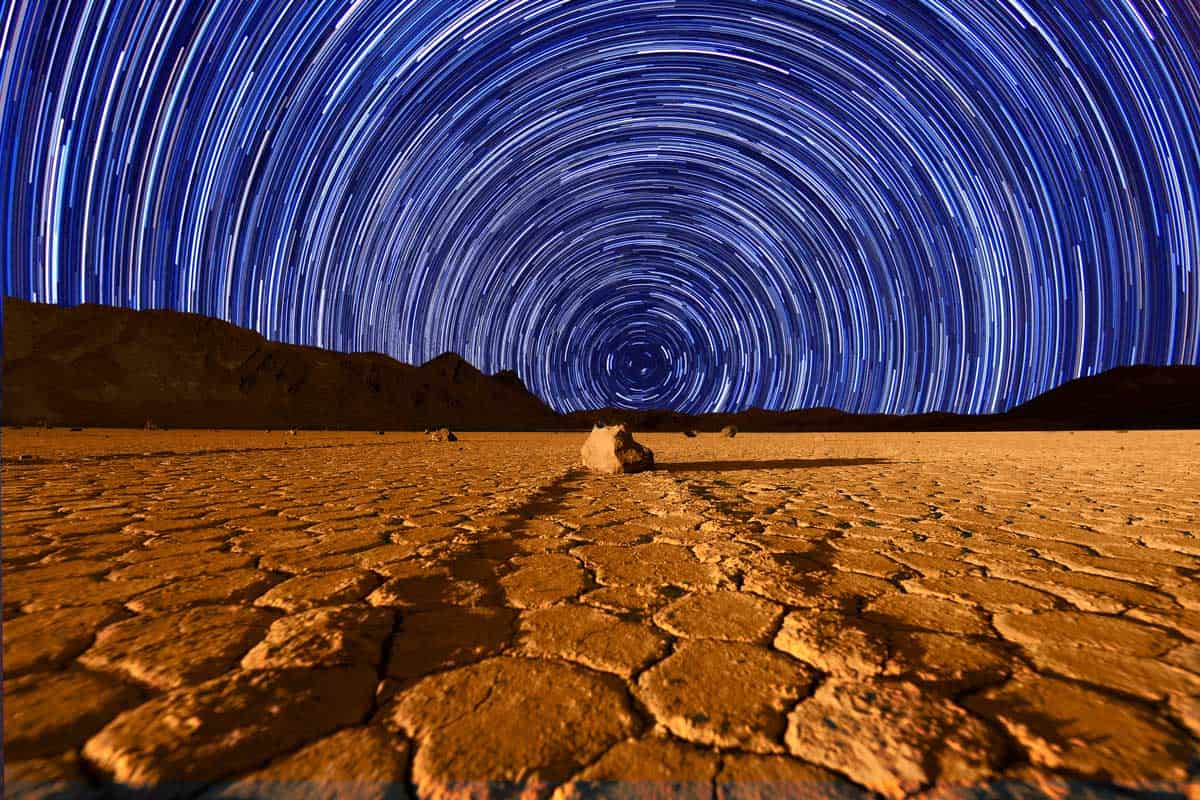










Hi, great info and tips! Thank you! I am visiting Las Vegas mid June and considering a day trip here. Do you think I should reconsider it because of the weather? I really wanted to experience it but also don’t want to regret it either. Thanks!